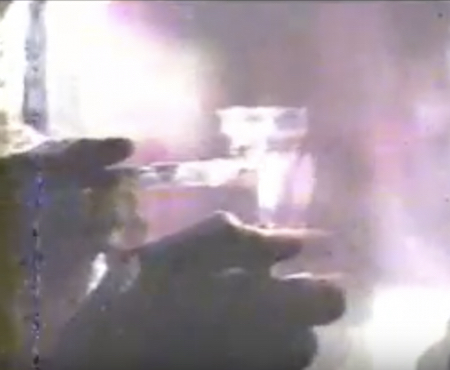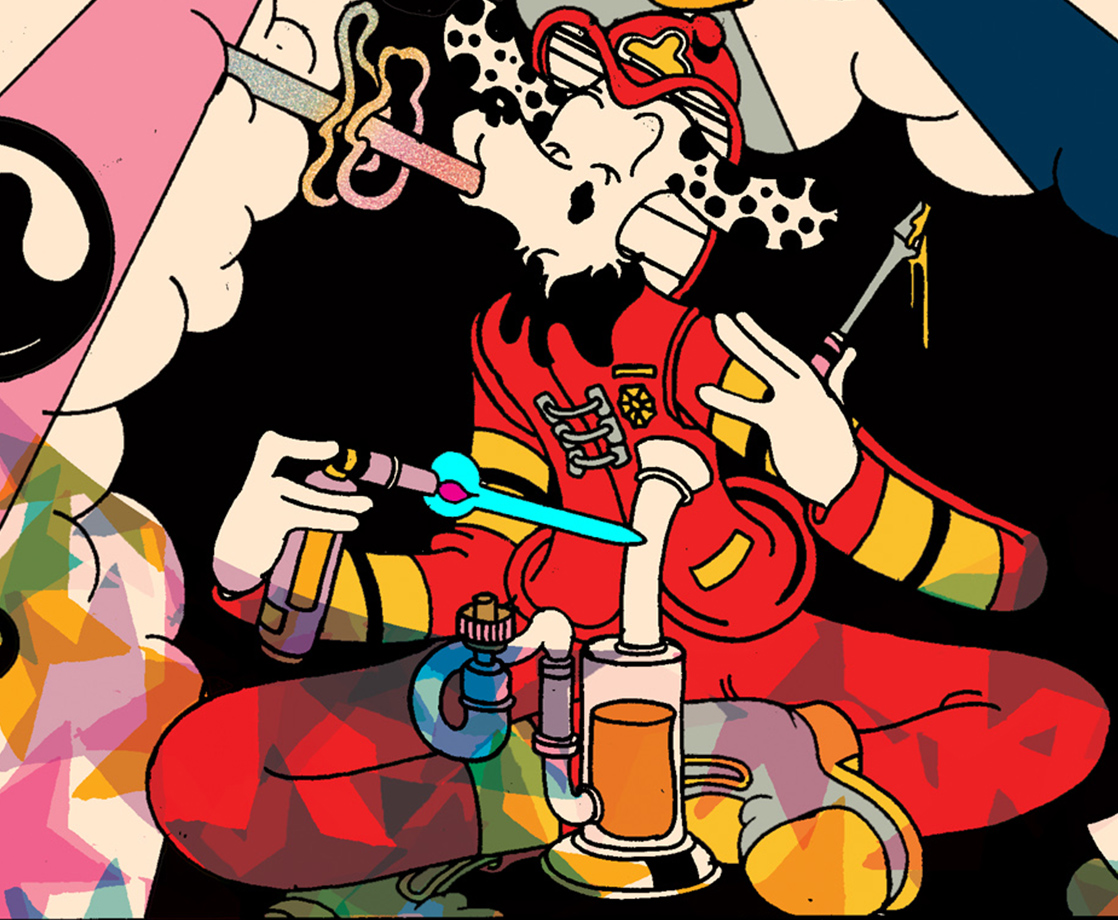America's history with cannabis prohibition is a volatile one, to say the least. Alcohol's thirteen-year tenure as the country's defining prohibitive notwithstanding, little else has made the leap back and forth from unmentionable sin to a facet of our daily existence (well, maybe that and masturbation). Yet we sit on the cusp of a moment in which marijuana's presence in the country at large is blooming into an entire industry.
This comes with its fair share of problems, on a federal and individual scale. Drug laws, many of which have been in place since the first half of the last century, have aided in the systemic abuse and stunting of communities of color. In most discussions of the War on Drugs—and in many chapters of this very column—the optics and the semantics are coded, but the results are anything but. With data that shows a disproportionate number of people of color finding themselves jailed for meager drug charges, the war on drugs begins to resemble a series of bike spokes, separate and intersecting, all emanating from the same center.
A majority of anti-drug ads tend to focus on the plight of young white Americans, often finding themselves skating the line between city and suburb, taken by the lure of something exciting and new. Yet some spots do tend to feature black protagonists similarly avoiding the pitfalls of drug use. The only difference is that often, they are portrayed as victims of a system presented with little to no nuance.
In "A Long Way Home," a kid identified as Kevin is shown running through a black and white neighborhood, plowing through the gaps of a wooden fence, attempting to go unnoticed by the neighborhood dealers. His voice over clues us into the struggle: "My teacher tells us all we got to do is 'Just Say No'," Kevin says, referencing the Reagan-era anti-drug mantra. "But my teacher doesn't have to walk home through this neighborhood. And maybe the dealers are scared of the police, but they're not scared of me, and they sure don't take no for an answer."
In another TV spot, a similar sense of empathy is clumsily forced into the campaign. This time, the spot opens more disturbingly on a group of slaves being dragged in chains as the voice over collapses the 400-year journey of the African people from slaves into addicts as a continuation of the same trauma. "Don't dishonor [your ancestors] by becoming a slave to heroin, cocaine and crack," he says. "Make no mistake: drug abuse is the new slavery."
These two spots offer different interpretations of the country's disenfranchised population. Their agency is considered from two different vantage points, but largely from that of victim. It's a disturbing sight, the ways that the war on drugs intensified towards narcotics at the tail end of the last century, while preserving laws like Three Strikes that allows the smallest amount of marijuana to lead to a life sentence.
Much has been written about how the prison system exploits black bodies for profit to perpetuate the sinister banality of capitalism. But the source of this strategy is a more complicated affair. There's rarely a single entity to blame for something like this, as even the people who set them in motion are acting on behalf of cultural impulses that have been slowly shaped by history. Still, if we're going to point fingers, we might as well point them at Harry J. Anslinger, the first commissioner of the Federal Bureau of Narcotics (FBN). Developed within the Department of the Treasury in 1930—three years before the end of alcohol prohibition in America––the FBN was largely if not entirely responsible for the country's growing sensitivity to matters revolving around marijuana.
Anslinger himself was a noted proponent of medical research on marijuana, and denounced those who claimed that the substance was dangerous. He's on record as having called the correlation between weed and acts of violent madness "an absurd fallacy." Yet upon the establishment of the FBN, Anslinger magically reconfigured his opinions to match the needs of a department that was, until then, focused almost entirely on narcotics and opiates—a focus that Anslinger himself realized wouldn't be enough to keep a new bureau funded. As a result, he refocused the department's energy on drugs used by more than just a tiny minority of the country. In less than a decade, his influence would result in the passing of the Marijuana Tax Act of 1937, which helped strengthen the criminalization of drugs like cannabis.
Anslinger's tenure as the commissioner of the FBN would last 32 years, and his influence on the modern war on drugs cannot be overstated. He helped single-handedly drive the department into a more socially influential yet less scientifically-driven assessment of societal health. In the 2005 documentary Waiting To Inhale, which chronicles the movement to legalize marijuana, Harvard Medical School MD Lester Grinspoon discusses the FBN's push to sideswipe any and all scientific backing in his assessment of marijuana.
"The people who decided that marijuana was a very harmful drug had taken the field from science, from what was actually in the scientific and medical literature," Grinspoon said. "Physicians became ignorant about cannibals. The American Medical Association threw in its hat with the Federal Bureau of Narcotics in about 1945, and physicians became not only victims of this propaganda campaign, but very effective agents. After all, [they] know about drugs and so forth."
As mentioned earlier this week, Anslinger's most effective strategy in trying to override cultural opinion of drugs was to use racism as a replacement for scientific reason. "Reefer makes darkies thing they're as good as white men," he's on record as having said during the era when he began to transition his department from their narrow focus on narcotics to a more broadly-applicable attack on minor drugs.
In his testimony before Congress regarding the Marijuana Tax Act, Anslinger noted that the effects of the drugs need to be emphasized in order to insure action. It was, in his mind, a matter of safety, even for those he considered less than human. "I wish I could show you what a small marihuana [sic] cigarette can do to one of our degenerate Spanish-speaking residents."
Anti-drug propaganda often trades on stereotype and shorthand as a kind of moral telegraphing. By uncomplicating inherently complicated policy and dilemmas, it makes all conclusions seem foregone. The troubling element of those two TV spots, and plenty more like them, is the way in which they perform a type of concern for the very minorities that the epidemic is placed on the back of. The motivation is well-established: keeping people of color "off drugs" is an empathetic effort mean to keep drugs "away from the rest of us." Anslinger is far from the only architect; the war on drugs is, after all, a functioning cog of white supremacy, and is considered an "institutionalized problem" for a reason. But he is a crucial lynchpin in a story that spans 400 years and multiple generations, an albatross as heavy as a bad high.











